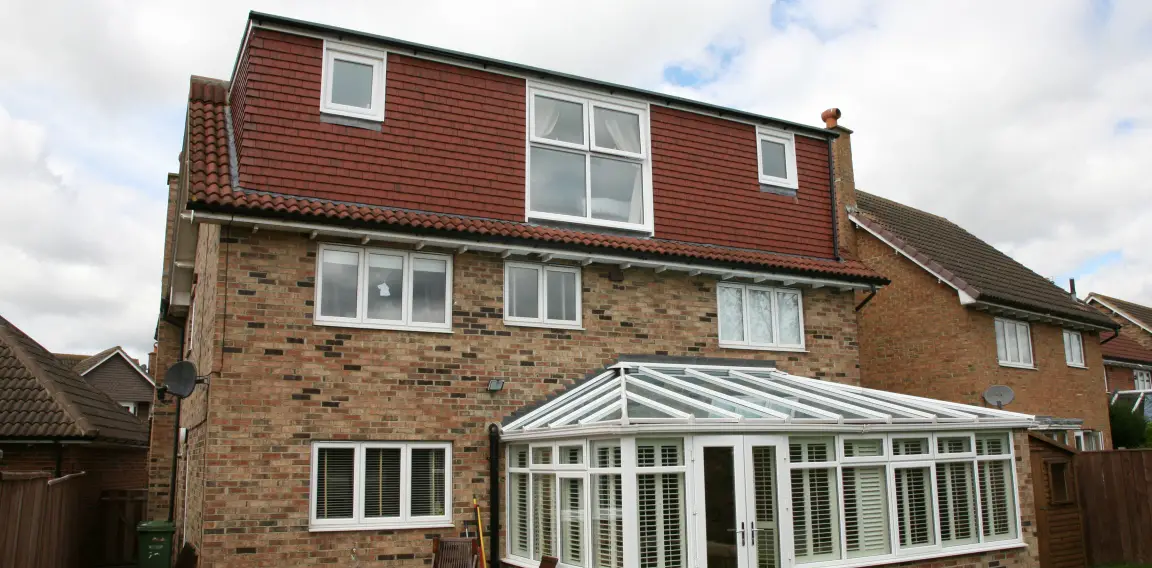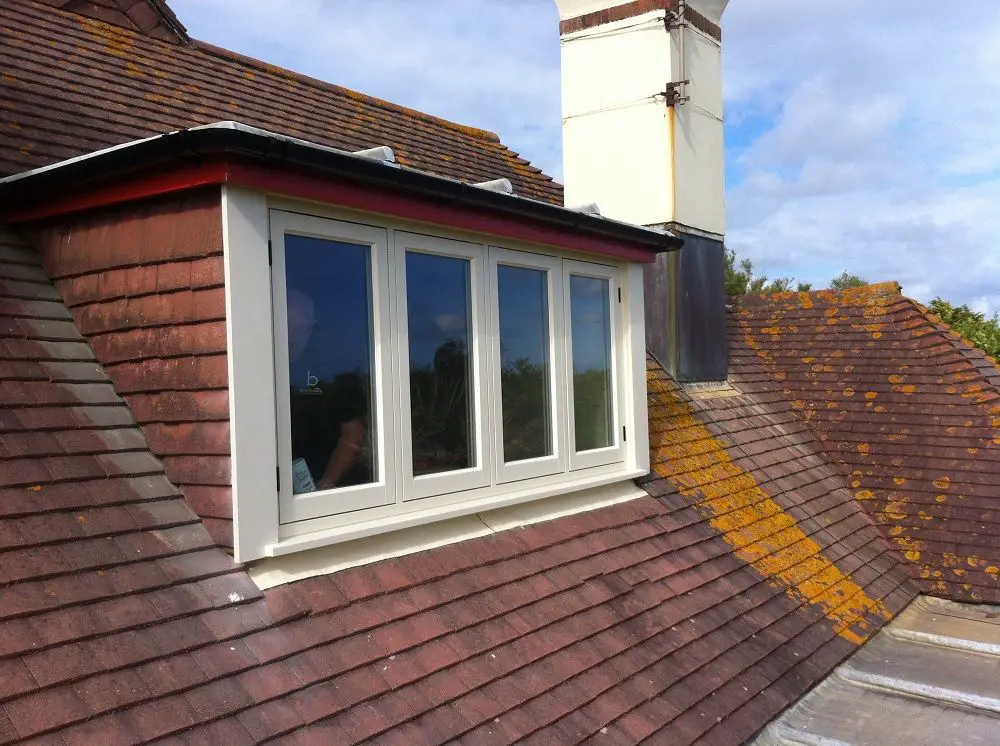Costs of adding a dormer to existing loft conversion roof
Dormer loft conversions are the most popular design in the loft conversion stable because they offer the maximum amount of headroom and usable floor space in a loft conversion project. But dormer conversions can be expensive, depending on the overall size of the conversion, how you furnish the interior and the number of windows you have. If you already have an existing loft conversion and you want to add a dormer, you’ll expect to pay upwards of £5,000 but this entirely depends on a case by case basis.
The best way to find out whether you can change your Velux loft conversion and add a dormer window is to speak to a dormer specialist in your area. Tell us about your project below and we can put you in touch with Velux to dormer experts in your area - for FREE. Time to complete: 30 seconds!
Adding dormers to an existing loft conversion
There are two reasons why this can happen:
- People buy a house with an existing roofline conversion and decide they want to upgrade the loft accommodation to make it larger and brighter and perhaps change the interior usage
- The loft conversion is planned in two stages to spread the cost or because the demand for accommodation at that time is satisfied with a more simple roofline conversion. A roofline Velux loft conversions cost is around £15,000 if you avoid fitting kitchens and bathrooms

Why do people upgrade loft conversions?
The loft conversion you planned ten years ago may not now suit your purposes or, you could have bought a house with a simple loft conversion and want to upgrade.
What is a dormer loft conversion?
A dormer is a box-like structure with vertical walls which juts out from the roof slope. Dormers can vary in size and style and number. They alter the accommodation within the loft to lose the sloping sides creating walls which sit at a ninety-degree angle to the floor which is why they add more usable floor space and standing head height.
Do you need planning permission to upgrade a loft conversion by adding dormers?
The same planning considerations will apply to the upgrade just as if you were starting from scratch. Don’t assume that because the original conversion did not require planning permission that the addition of dormer windows will also avoid the requirement for planning consents. The usual trigger points are:-
- The overall size of the loft conversion, the upgrade could make the conversion larger than the original design
- Whether the property is listed and/or in a conservation area
- How much structural change is made to the appearance and height of the existing roof
- How far the dormer windows project from the roof plane
Not all dormer window conversions require planning permission, your builder or loft conversion company will be able to advise you whether or not your plans are likely to need consent or whether they fall within permitted development rights. These are some of the design features which may mean that your dormer loft conversion requires planning permission:-
- Your dormer conversion exceeds 40 square metres on a terraced house or 50 square metres on a semi-detached or detached home
- The height of the dormer windows exceed that of the original roof
- Your dormer has a balcony although Juliet balconies are not a problem
- The materials used for the dormer loft conversion are out of character with the rest of your home
- Your neighbours are affected by your dormer either by being overlooked or overshadowed
- Your home is listed and/or in a conservation area
Even if your dormer loft conversion project falls within Permitted Development or PD, you should still apply for a Lawful Development Certificate so you can evidence this if you ever need to. This is particularly useful when you come to sell the property.
Different types of dormer
Flat roof dormer – with a flat roof that sits horizontally
Shed dormer - a dormer with a roof that slopes down
Dog-house dormer – a dormer with a pitched roof on two sides that gives the classic appearance of a dog kennel, these are popular on old cottages and period properties and can be a real feature in the roofline
Hipped roof dormer – this is similar to a dog house dormer but with three sloping sides instead of two
L-shaped dormer – this is the largest type of dormer and are specifically designed for Victorian houses which have a rear extension commonly housing a kitchen and bathroom. They start in the roof void and continue over the extension effectively adding an entire extra storey to the property.
What are the advantages of a dormer loft conversion?
Dormer loft conversions remain the most popular type of loft conversion and with good reason. Here are just some of the reasons why they are chosen above other styles and designs:-
- Dormers offer the greatest amount of flexibility within the loft conversion to alter and upgrade the existing accommodation
- By increasing standing head height and usable floor space, dormers offer maximum interior accommodation choices particularly compared to a simple roofline conversion
- Dormers are suitable for almost every type and style of house
- You can use any type of window to match the rest of the property because they are being fitted to vertical rather than sloping walls so you are not confined to Velux windows or roof lights
- You can fit a door leading to a small Juliet balcony
Are there any downsides to a dormer loft conversion?
The work is definitely disruptive compared to some other forms of loft conversion but the end result is usually well worth any short term inconvenience. The price tag is obviously a big factor but the uplift in the value of your property when the work is complete could be as much as 20% to 25% so the upgrade will represent a sound financial investment.
Some people find dormers unsightly as the windows can look juxtaposed to the roof and there are certainly some examples around of quite poorly designed dormers particularly on older houses. Blending the design of the property to the architectural style of the property is really important to achieve an aesthetically pleasing result.
If I don’t need planning permission will I still need Building Regulations approval?
Whether or not your dormer loft conversion requires planning permission, it will certainly need to comply with Building Regulations; these are a vital part of any loft conversion project. The drawings and plans need to be lodged with the local Building Inspector who will arrange staged visits throughout the construction process to ensure compliance. Some of the things which Building Regulations apply to include:-
- Sufficient headroom
- Insulation
- Fire Safety
- Staircase design
- Electrics
- Soundproofing
If you live in an old house, you may find that the application of modern Building Regulations ensures the conversion is built to a higher standard than the remainder of the property. The Buildings’ Inspector usually signs off the work just before the internal fitting and decoration starts, he is only really interested in the structure.
What kind of interior accommodation can be created with a dormer loft conversion?
By creating walls at right angles to the floor rather than the original sloping design, dormer loft conversions create far more usable space so you may find that your choice of interior fittings is greatly increased if you are upgrading from a simple roofline conversion to a dormer conversion.
- Create a home office or home working space which can be used for adults as well as teenage students who may want somewhere to study
- Style out a rooftop media room for all the family also freeing up essential reception rooms on the ground floor for other purposes
- Add extra bedrooms and a bathroom for small children
- Create a skyline playroom, somewhere you can leave toys out on the floor; this can develop as the children grow eventually turning into a teenage crash pad or sitting room which they will love to share with their friends
- Add a luxurious and large bedroom with dressing room and en-suite
- Develop that home gym you have always dreamed of
- Add a kitchen and open plan living and dining area which can be matched out with a bedroom and en-suite on the floor below to create a self-contained annexe for a family member who wants their own space or even as a project to create an income line subject to the right consents
Adding some serious accommodation to your dormer loft conversion will have a big impact on other rooms in the home, freeing up space which you can use for other purposes or allowing you to add rooms together to create one larger area.
A dormer loft conversion will allow you to create the extra space you need without having to go to the expense and hassle of selling a home which you love and which is perfect in every other way. Pound for pound, dormer loft conversions represent a better return for your investment than a side or rear extension which are not always possible depending on the style and situation of your home or, which may already have been done. Dormers can be also added to bungalows, click here to see loft conversion costs for a bungalow.
Get a loft conversion quote
See how we work below.

1. Tell us some details of existing property
Tell us the details of your property and the type of loft conversion you would like.
2. Tell us your UK address
We have a national network of roofers around the United Kingdom. Whether you are in Scotland or London, we can help.
3. Recieve a no obligation quote
You'll receive up to 4 no-obligation quotes and have a better idea of your loft conversion costs.
Get quotes from reputable suppliers here
Save 1,000's on your loft conversion project. Get no-obligation quotes today.

